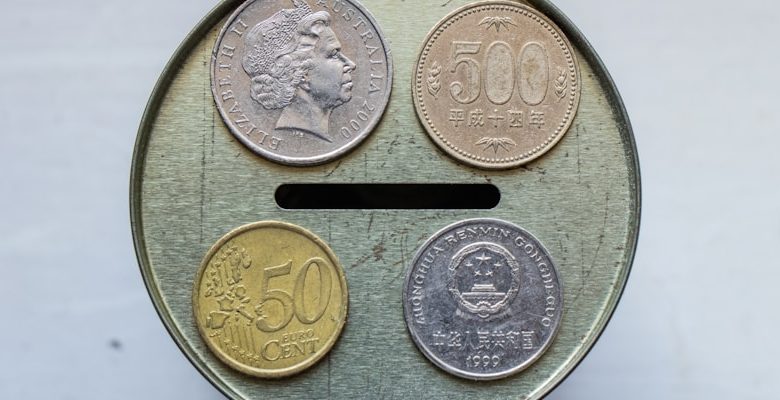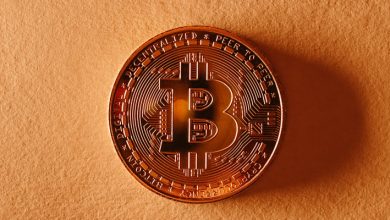The Difference Between Coins and Tokens Explained

- Understanding the basics of cryptocurrency coins and tokens
- Key distinctions between coins and tokens in the digital asset space
- Exploring the various use cases of coins and tokens in blockchain technology
- How to differentiate between coins and tokens when investing in cryptocurrencies
- The impact of coins and tokens on the decentralized finance (DeFi) ecosystem
- Navigating the complexities of coins and tokens in the ever-evolving crypto market
Understanding the basics of cryptocurrency coins and tokens
Cryptocurrency coins and tokens are both digital assets, but they have some key differences. Understanding these basics can help you navigate the world of cryptocurrencies more effectively.
Coins are digital currencies that operate on their own blockchain. Examples of coins include Bitcoin, Ethereum, and Litecoin. These coins can be used as a medium of exchange, store of value, or investment.
Tokens, on the other hand, are built on existing blockchains and represent assets or utilities. Tokens can represent anything from real-world assets like gold or real estate to access rights for a specific platform or service.
Coins typically have their own independent value, while tokens’ value is derived from the underlying blockchain platform. Both coins and tokens can be traded on cryptocurrency exchanges, but they serve different purposes within the blockchain ecosystem.
Key distinctions between coins and tokens in the digital asset space
One key distinction between coins and tokens in the digital asset space is their underlying technology. Coins typically operate on their own blockchain, such as Bitcoin or Litecoin, while tokens are built on existing blockchains like Ethereum.
Another important difference is their purpose. Coins are primarily used as a medium of exchange or store of value, like traditional currencies. On the other hand, tokens can represent a wide range of assets, from company shares to loyalty points.
Furthermore, coins have a fixed supply cap, meaning there is a limit to how many can ever be created. Tokens, on the other hand, can have a dynamic supply based on the needs of the project or platform they are associated with.
Additionally, coins tend to have their own independent value and can be used across various platforms. Tokens, however, derive their value from the success of the project they are linked to, making their value more volatile and dependent on external factors.
Exploring the various use cases of coins and tokens in blockchain technology
When it comes to blockchain technology, coins and tokens play a crucial role in various use cases. Coins such as Bitcoin and Ethereum are used as a medium of exchange on their respective networks, allowing users to transfer value and make transactions. On the other hand, tokens represent assets or utilities that are created on existing blockchains. These tokens can be used for a wide range of applications, including fundraising through Initial Coin Offerings (ICOs), voting on governance issues, accessing decentralized applications, and even representing real-world assets like gold or real estate.
One of the key differences between coins and tokens is their purpose and functionality. Coins are primarily used as a form of digital currency, while tokens have a specific use case within a particular ecosystem. For example, utility tokens are used to access services or products within a decentralized application, while security tokens represent ownership of an underlying asset and may offer dividends or profit-sharing to token holders.
Understanding the various use cases of coins and tokens is essential for navigating the complex world of blockchain technology. By knowing the differences between these two types of digital assets, investors and users can make informed decisions about which projects to support and which assets to hold in their portfolios. Whether you are looking to invest in a promising cryptocurrency or participate in a token sale for a new decentralized application, having a solid understanding of coins and tokens is crucial for success in the blockchain space.
How to differentiate between coins and tokens when investing in cryptocurrencies
When investing in cryptocurrencies, it is crucial to differentiate between coins and tokens. Coins are digital currencies that operate independently on their own blockchain, such as Bitcoin and Ethereum. Tokens, on the other hand, are built on existing blockchain platforms and serve a specific purpose within a project or ecosystem.
To distinguish between coins and tokens, one must consider the underlying technology and the purpose of the digital asset. Coins typically have their own blockchain and are used as a medium of exchange or store of value. Tokens, on the other hand, represent assets or utilities within a project, such as access to a platform or voting rights.
Another way to differentiate between coins and tokens is by examining their use cases and functionalities. Coins are generally used for transactions and payments, while tokens can have various functions depending on the project they are associated with. It is essential to research and understand the project’s whitepaper to determine the utility and value proposition of the digital asset.
Furthermore, investors should consider the liquidity and market demand for coins and tokens. Coins like Bitcoin and Ethereum are more widely traded and accepted, making them more liquid than tokens with limited use cases. Understanding the market dynamics and ecosystem of a digital asset can help investors make informed decisions when investing in cryptocurrencies.
In conclusion, when investing in cryptocurrencies, it is important to differentiate between coins and tokens based on their underlying technology, purpose, functionality, and market dynamics. By conducting thorough research and due diligence, investors can make educated decisions and mitigate risks associated with the volatile cryptocurrency market.
The impact of coins and tokens on the decentralized finance (DeFi) ecosystem
The impact of coins and tokens on the decentralized finance (DeFi) ecosystem is significant. Coins are primarily used as a form of digital currency, while tokens represent assets or utilities on a blockchain platform. Both coins and tokens play crucial roles in the DeFi space, providing users with various opportunities to participate in decentralized financial activities.
Coins such as Bitcoin and Ethereum are widely accepted as a medium of exchange and store of value in the DeFi ecosystem. These coins serve as the backbone of many decentralized applications and protocols, facilitating transactions, lending, and borrowing activities. Their widespread adoption has helped to increase the accessibility and liquidity of DeFi platforms, allowing users to engage in financial activities without relying on traditional banking systems.
On the other hand, tokens are created to represent specific assets or functionalities within a decentralized application. These tokens can be used for voting rights, governance, staking, or accessing certain services on a DeFi platform. By leveraging tokens, users can participate in the governance of decentralized protocols, earn rewards through staking, or access unique features offered by DeFi applications.
Overall, the presence of coins and tokens in the DeFi ecosystem has revolutionized the way we think about finance. These digital assets have democratized access to financial services, allowing individuals from all over the world to participate in a global financial system without the need for intermediaries. As the DeFi space continues to grow and evolve, the impact of coins and tokens will only become more pronounced, driving innovation and expanding opportunities for users.
Navigating the complexities of coins and tokens in the ever-evolving crypto market
Understanding the nuances between coins and tokens is crucial in navigating the complexities of the ever-evolving crypto market. While both coins and tokens are digital assets, they serve different purposes and have distinct characteristics that set them apart.
Coins, such as Bitcoin and Ethereum, operate on their own blockchain networks and are used as a form of digital currency. They have a fixed supply and can be traded, spent, or held as an investment. On the other hand, tokens are built on existing blockchain networks, like Ethereum, and represent assets or utilities. They can be used for a variety of purposes, such as accessing a specific service or participating in a decentralized application.
Investors should be aware of the differences between coins and tokens to make informed decisions when navigating the crypto market. Coins are typically seen as more stable and established, while tokens can offer more versatility and potential for growth. By understanding the distinctions between these digital assets, investors can better assess their risk tolerance and investment strategies.



